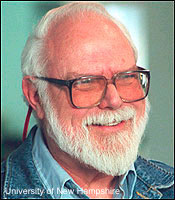
In the world of print journalism one of the icons of effective writing was the late Don Murray, a Pulitzer Prize winner, Boston Globe writer, an editor for Time, and author of more than a dozen books.
Murray believed everyone had the capacity to write with power and clarity. One of the key elements is to understand the process of writing, particularly in the kind of non-fiction most of us do every day, whether writing a short email or a longer piece. The elements of organization remain the same.
What Murray taught journalists is that formation of a compelling story unfolds in five parts:
Selection: The first element is for the writer to decide what the point of the writing is. Then lead with the point. Help the reader get right to the essence of why we are writing.
Reporting: “Effective writing is built from specific, accurate information,” Murray said. Too often when writing a memo or a report, we embark on long exploratory or overly contextualized narrative before clearly delivering the message. The reader appreciates specifics without overly complex preamble.
Organization: “Organizing…is the technique I use most often to find productive focus for what I’m writing,” Murray said. “I look for an event, a quotation, a statistic, an anecdote, an individual, a place, a process, a revealing detail which can be the seed from which the entire piece of writing will grow.”
Drafting: Once the fundamentals of beginning to write are under way, we write. Or, as Murray said, we draft. For Murray, the draft is the time of discovery and reflection. Once written, the writer then has opportunity to review what has been written and make sure the intent, the focus, the selection, reporting and organizing is clear.
Clarifying: Murray believed “the most satisfying part of the writing process comes when there is a draft that can be shaped into meaning by the writer’s hand.” Murray advises to never ask whether the writing is good or bad. More helpful, he says, are the questions: “What works?” and “What needs work?”
Murray believed brevity creates vigor and clarity. “The more complicated the subject, the harder to understand, the more important it is to use the shortest words, the shortest sentences, the shortest paragraphs that communicate the meaning without oversimplifying and distorting it.”
He also believed the process of rewriting was a gift of opportunity rather than drudgery or punishment. In “Read to Write” Murray quoted playwright Neil Simon: “Rewriting is when playwriting really gets to be fun. In baseball you only get three swings and you’re out. In rewriting, you get almost as may swings as you want and you know, sooner or later, you’ll hit the ball.”